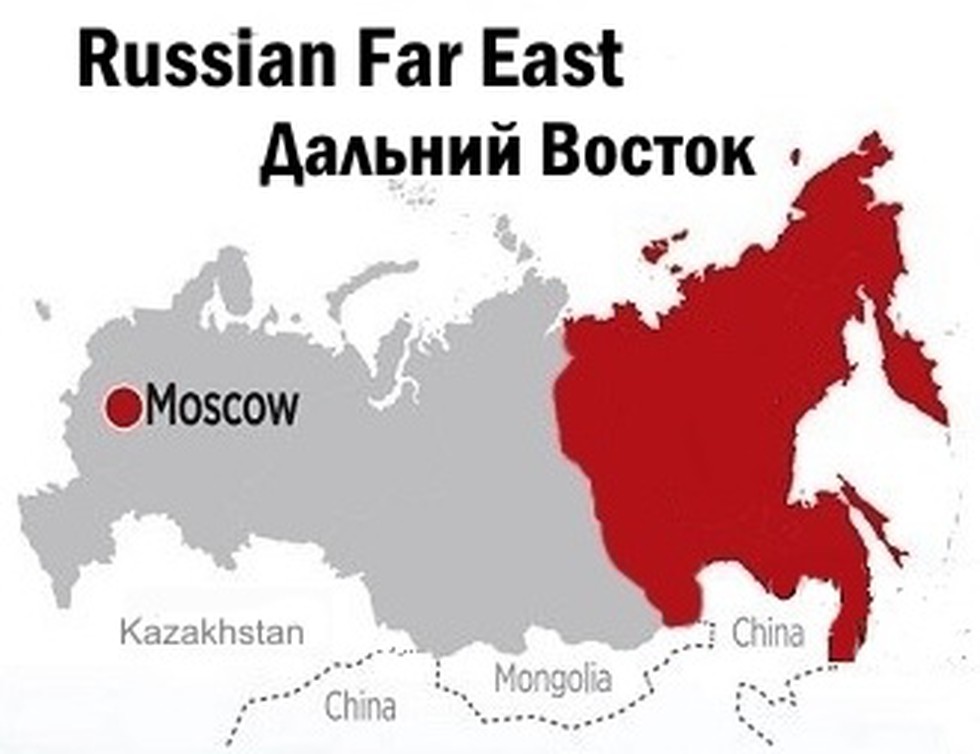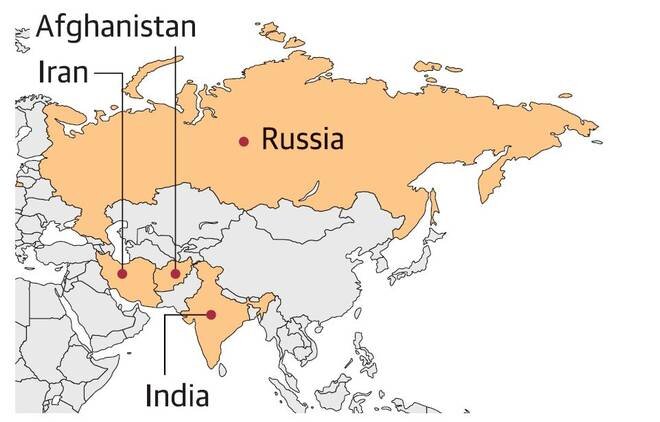India-Russia relations GS: 2 EMPOWER IAS
India-Russia relation
In news:
- Recently, PM Modi at Eastern Economic Forum has unveiled the ‘ Act Far East” policy to boost India’s engagement with Russia’s Far East region.
What is this policy all about?
- Prime Minister Narendra Modi launched the 'Act Far East' policy during his two-day visit to Russia, where he announced a $1 billion line of credit for the development of the resource-rich region.
- The policy was launched during 20th India-Russia annual summit and the fifth meeting of the Eastern Economic Forum (EEF).
- He asserted that India will walk shoulder-to-shoulder with Russia in its development of the Far East.
- For the development of Far East, India will give a line of credit worth USD 1 Billion Line of Credit to Russia’s Far East region(RFE).
- The focus of the Act East policy, which began as a “Look East policy” — that was launched by the former prime minister PV Narasimha Rao in 1991 — was to shift the country's trading focus from the west and neighbour to the booming South East Asian countries.
- The EEF focuses on the development of business and investment opportunities in the Russian Far East Region and presents enormous potential for developing close and mutually beneficial cooperation between India and Russia in the region.
Act East policy:
- Some of the major projects in this collaboration with South-East Asian countries include the Kaladan Multi-Modal Transit Transport Project, the India-Myanmar-Thailand Trilateral Highway Project, Border Haats and Rhi-Tiddim Road Project, etc
- Act Far East' is said to be an extension to India’s Act East policy.
- Its major objectives are to increase the interaction of the northeastern Indian states with other neighbouring countries and to curb the increasing impact of China in the ASEAN (Association of Southeast Asian Nations) region.
What is the difference between the 'Look East' and 'Act East' policy of India?
- The distinction between them is that the former aimed to increase economic ties with only the "South-East Asian countries" whereas the latter aimed to increase economic as well as defence-related ties with "Southeast and East Asian countries".
Significance of this policy:
- "Act Far East" policy will boost India's engagement with Russia's Far East regio
- This will also give a new dimension to our economic diplomacy.
- The announcement of the LOC, expected to help finance Indian business projects in the region, will be the “take-off point for Act Far East”, and will further strengthen bilateral ties.
- India and Russia have undertaken several ‘ambitious’ targets to “scale heights together in space and map the depth of the sea”.
- Its major objectives are to increase the interaction of the northeastern Indian states with other neighbouring countries and to curb the increasing impact of China in the ASEAN (Association of Southeast Asian Nations) region.
- Russia’s Far East is a huge land mass which is rich in resources but is sparsely populated and underdeveloped.
- With the centre of gravity of global economics shifting to Asia, Russian President is keen on focusing on the Far East and develop it with the help pf Asian powers.
- Russia is attempting to diversify assumes importance so as to lessen Russia’s growing dependence on China.
- Indian investors will also find much of value as they look at Russian Far East and explore investment opportunities there
About Eastern Economic Forum:
- The EEF is a forum which since 2015 has been trying to push for the development of business and investment opportunities in the Russian Far East Region.
- Recently held in Vladivostok, set up by Russian President Vladimir Putin to attract investment to the farthest outlying East Siberian and Arctic-pole areas of the country.
- The forum focuses on the development of business and investment opportunities in the Russian Far East Region and presents enormous potential for developing close and mutually beneficial cooperation between India and Russia in the region.
- The Forum business programme includes a number of business dialogues with leading partner countries in the Asia-Pacific region, and with ASEAN , a key integration organization of dynamically developing nations in Southeast Asia.
- Over the years , the forum has emerged as an international platform for discussing the strategy for developing political, economic and cultural ties between Russia and Asia Pacific.

|
India-Russia relations:

- In the past year alone, India has contracted defence deals worth about $14.5 billion from Russia.
- New Delhi’s decision to go ahead with the purchase of S-400 missile defence system, worth over $5 billion, despite the threat of US sanctions, underscores the importance India continues to attach to its defence engagement with Russia.
- Prime Minister Modi wants India and Russia to take advantage of the low production cost in India to produce military equipment under joint venture framework at cheaper rates for the third-world nations.
- There are also reports of a possible military logistics support agreement, the Agreement on Reciprocal Logistics Support (ARLS), aimed at facilitating access to each others’ military facilities.
- The two sides also agreed on a five-year ‘roadmap’ for cooperation on prospecting for hydrocarbons and LNG in the Far East and the Arctic, building on a history of Indian investment in oilfields in the region.
- Russia and India are also becoming more ambitious by pursuing projects in third countries such as the Rooppur nuclear power project of Bangladesh.
- The Sides emphasized the importance of joint research in science and technology.
- They are committed to intensify development of high-tech products in such spheres, as telecommunications, robotics, artificial intelligence, nanotechnologies, pharmacy and others.
- The Sides welcomed the active work carried out within the framework of the signed MoU on support of the Russian Side for India’s first manned mission "Gaganyaan”.
- India and Russia have strong cultural ties, which are an important contribution to the strong and robust relations between the countries.
- Historical linkages have contributed to creating goodwill between the nations.
- Both sides are making progress towards achieving the target of mutual investment of US$ 15 billion each way by the year 2025.
- In 2016, Indian oil companies bought stakes in Russian companies and oilfields worth US$ 5.5 billion, and Rosneft has acquired an Indian company, ESSAR, in a deal worth US$ 13 billion. This is not only Russia’s largest investment in India, but also India’s single largest FDI.
- India and Russia have set up a US$ 1 billion Fund to promote mutual investment in infrastructure and technology projects.
- India is also significantly increasing cooperation between the States of India and Regions of Russia.
- India, Russia and other neighbouring countries are engaged in efforts to operationalise the International North-South Transport Corridor which promises to propel connectivity and trade relations between the two countries.
- The two nations are also working on a ‘Green Corridor’ to ease trade and customs formalities.
- Russia is an indispensable partner in the sphere of nuclear energy and recognizes India as a responsible country with advanced nuclear technology with an impeccable non-proliferation record.
- After the Paris Agreement on Climate Change India considers nuclear energy as an important source of energy to meet its energy and climate change obligations. This has brought both countries together into a mutually beneficial relationship.
- Rosatom is building six units of nuclear reactors at the Kudankulam site in Tamil Nadu. Two units are already operational and the next four are in different stages of implementation.
- India attaches very high importance to local manufacturing in India of equipment and components for upcoming and future Russian-designed nuclear power projects.
Outcome of recent visit of PM to Russia:
- Areas of cooperation: Both side agreed to more actively engage the impressive resource and human resources potential of India and Russia, enhance industrial cooperation, create new technological and investment partnership, especially in advanced high-tech areas and find new avenues and forms of cooperation.
- Make in India: To boost ‘Make in India’, both sides agreed to speed up preparations for signing of the India-Russia Intergovernmental Agreement on Promotion and Mutual Protection of Investments.
- Development in Arctic region: India looks forward to cooperate with Russia in the Arctic. India has been following the developments in the Arctic region with interest and is also ready to play a significant role in the Arctic Council.
- Hydrocarbons: The two countries signed the Roadmap for cooperation in Hydrocarbons for 2019-24.
- International North-South Transport Corridor (INSTC): The Sides intend to work on improving the transport infrastructure. This highlights the great importance to the development of the International North-South Transport Corridor (INSTC).
- High technology development: The two countries are emphasizing on intensifying development of high-tech products in spheres like telecommunications, robotics, artificial intelligence, nanotechnologies, pharmacy and others.
- Space 2030 Agenda: Both intend to strengthen cooperation within the UN Committee on the Peaceful Uses of Outer Space (UN COPUS), including guaranteeing long-term sustainability of outer space activities and developing "Space 2030” Agenda and implementation plan.
- SCO: India and Russia unanimously recognize the effectiveness and great potential of the Shanghai Cooperation Organization.
Implications:
Russia’s Far East has far-reaching strategic implications:
- The investment in the Far East, which is often neglected given that Russia is seen as a European power in the post-Soviet era, also underlines India’s desire to draw Russia into its strategic forays in the Indo-Pacific.
- The push to ‘Act Far East’ allows India to demonstrate its commitment to an area of concern for Moscow, thus reassuring its traditional partner that in an increasingly polarised world, India is confident of working with multiple alignments, even if they are at cross purposes with each other.
Challenges:
- The challenge in front of India and Russia is that they need to transform a 20th century partnership and make it fit for the 21st century.
- Global trends are evolving rapidly and major powers are re-defining their ties with each other to match their contemporary requirements. New Delhi and Moscow cannot be fixated on the past and can’t expect exclusionary bilateral ties from each other.
- It will have to be a continuous engagement to sustain the momentum created by regular outreach between the top leaders.
Way ahead:
- Both nations should build on this trust to carve out a modern, broad-based partnership more in sync with contemporary realities.
- advancing the comprehensive development of the Indian-Russian relations is an absolute priority of the foreign policy of both States
- Special focus will be given to cooperation between the younger generation and cultural sphere.
- Both have to revitalise their earlier agreement on sharing intelligence for a joint strategy on terrorism. Indian and Russian anxieties on terrorism need to converge and bring about some positive outcome.
- India needs to deepen its scientific and technological relations with Russia since a base for this already exists.
- India can use some creative means to build a Russia-India-China (RIC) alliance.
- Needs focus is increasing trade and investment ties between India and Russia
- India and Russia will continue to remain a role model for harmonious and mutually beneficial partnership and strong friendship between States. This will be to the benefit of our States and international community as a whole.
Source)
https://www.thehindu.com/opinion/editorial/bear-hug-on-india-strengthening-relations-with-russia/article29355066.ece
